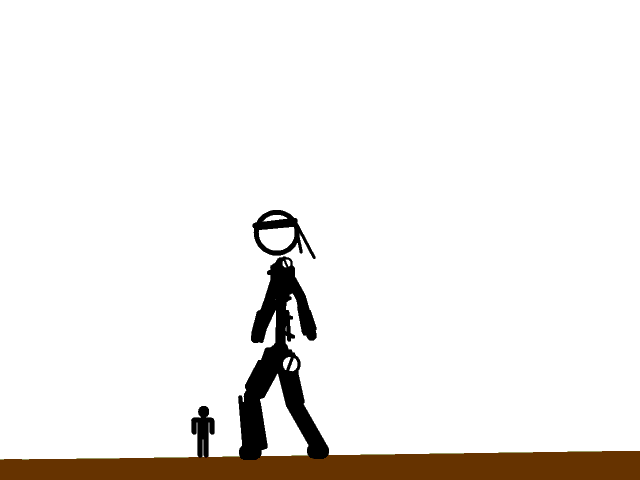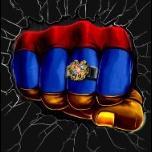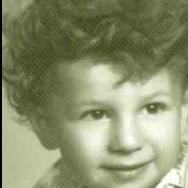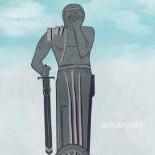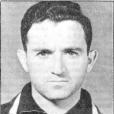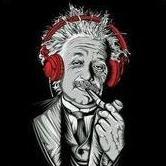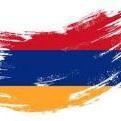Таблица лидеров
Популярные публикации
Отображаются публикации с наибольшей репутацией на 06.03.2017 во всех областях
-
Ну что Камрады. Наши дети превосходные и за это их ценят. К примеру... сезон 2016 г выиграл Севак Ханагян. Пожелаем удачи в 2017-ом Лусине Кочаряну.3 балла
-
Да, да - в реале они все и азеров на дух не переносят, и армян уважают... А как зайдешь в Интернет - сплошные оскорбления в адрес армян. В адрес азербайджанцев кстати не встречал - к ним относятся скорее с презрением или просто пренебрежением. А вот армян именно ненавидят. То ли в реале и в Интернете разные чеченцы, то среди них много скользких и двуличных людей, которые в лицо говорят армянам комплименты, а за спиной - гадости.3 балла
-
я именно об этом- будь то апрельское видео когда с тревогой в голосе наблюдается проход крупной группы врага- ведь уже ясно, что в такое время дня такая группа не просто так идет в разведку- там минимум 100- их можно было в капусту изрубить - но чувство такое что приказ пока они не в твоем окопе- не трогать... должен быть алгоритм- на все случаи.... мы должны быть на шаг впереди, а на данныий момент мы отстаем на 3 шага- в этом я вижу плюсы апреля- потеряв 2 стратегические высоты и 120 ребят мы поняли что ко многому не готовы- это не самая большая цена. Вот к примеру в бившем азерском райцентре недалеко от Гроиса с Капаном СТОИТ ЦЕЛЫЙ ПОЛК- ЭТО ИЗВЕСТНО ПРОТИВНИКУ? 100% Эсли это известно мне, человеку котороый не был в Армении 16 лет, конечно это известно врагу. 1-им авиаударом этот полк резерва может бЫть разбомблен. Сколко нужно времени чтобы долететь до условного кубатлы? минуты. Успеэт наше пво среагировать? сомневаюсь. какакя там пво на месте? шилка старая? поетому совок нужно устранять, а резервный полк рассредоточить хотя бы поротно.... ну и куча всего... очень надеюсь что те кто ответстевенны за жизни 18-20 летних предусматривают всякие варианты3 балла
-
Чтоб там не было, я не пойму одного! Зачем на основе аз видео, бударажить тему, где нет ясных и четких аргументов, неужели нам недостаточно того, что мы знаем, неужели кто-то сомневается в потерях противника. И в конечном итоге, если нам необходимо показать реальные потери противника, уверен, что это возможно и мы в том числе насняли не один десяток часов боев и можем показать. Даже будь это сто раз аз. танк, который мы подбили, поднимать темы которые всиляют непонимание и споры меж нами, абсолютно не оправданная затея.3 балла
-
Ответ на этот вопрос прост. И еще в апреле я про это писал .Не бывает так, что везде все героически сражаются .Бывает так , где убегают , бывает так где сражаются до последнего. Тотального героизма не было тогда , как представляет пресса и не будет никогда . Про то готовы мы или не готовы , опять же покажет время. Не нужно излишне преувеличивать возможности наступающих. Когда говорят противника нельзя недооценивать , не означает ,что мы старыми шилками сидим а они вот прилетят и все разбомбят ))). Наступающие тоже имеют недостатки и уязвимые места . Все как у людей. Как ни крути , хочется вам этого или нет, хорошо или плохо , но наша война напрямую связана с политикой. Отсюда есть много "почему " , на которые сложно найти ответы .Вы считаете что мы проиграли , потому что изначально верили в какие то сверхвозможности .Я считаю , что мы не проиграли , а выстояли , но не победили. Используя такой ресурс , против такого , невозможно чтобы они не овладели этими высотами . И потярено не мало из этого ресурса. Выводы сейчас делаем не только мы , но и они .2 балла
-
Конечно же логично что это наша техника горит на видео-позиция оставлена без боя Вопрос в другом.Как только потеплеет, будет продолжение.Тепловизоры это замечательно, дух наших ребят тоже. Но факт остается фактом, к апрелю мы были не готовы, хотя анализ показывал что враг скоро начнет. Если честно, я не разделяю эйфории по поводу февраля. Какого хера азеры имеют возможность так близко и безнаказанно подбираться до наших окопов и пытаться забросать наших гранатами, они не должны были так легко отступить- ведь этот эпизод случился через пару часов после того как они получили южнее- неужели в таких случаях не обьявляется более высокая боеготовность и не идет подкрепление к постам? Потом на след утро дрон показiвает заброшеннiй пост- занимать его не надо, но пару сюрпризов для азеров оставить там можно было же. Трусливая тактика -бить их только когда нету другого выбора ни к чему не приведет. Я все равно считаю что в апреле мы проиграли- проиграли в том что уступили господствующие высоты. а они подтянули технику и окопались- что нам мешало сделать то же- чтобы они так борзо не атаковали- вопрос не только в снабжении- вопрос еще и в не-эффективности на местах-почему когда их яшма пробиралась её не накрывали артилерией и минометами? Почему посты были оставлены без боя? Я не призываю искать виноватых-я призываю готовиться к новому апрелю и в случае мелких вылазок, давать им еще более жесткий ответ чем в феврале. Втoрая вылазка для них прошла безнаказанно, они каким то макаром со своих позиций пробрались до 50 метров к нашим при том что на их пути было минное поле и наши за ними наблюдали. При этом в этой вылазке у них 0 убитых. Разве это нормально для нас? Потом лейтенант сам сказал, что он делал проверку поста в эту ночь и турков в какой то степени случайно засекли. Вообщем на душе не так уж и радостно.... плюс в апреле если честно у них не было широкомасштабного наступления -страшно даже представить если бы они задействовалии авиацию и ракетную артилерию с современным оружием, враг может за счет внезапности за 1-2 дня нанести тяжелый урон. И ответка должна следовать не через 3-4 дня, а 2-3 часа и максимално жесткая-с целью не дать им нанести большой урон. на данныий момент я не вижу готовности к быстрому реагированию.2 балла
-
Я в принципе соглашусь, только одно но... 2 числа там танка быть не могло.. это не капонир, это просто место парковки окопанное.. судя по конфигурации - типовой взводный опорный пункт.. версия.. возможно это не танк горит.. плохо видно если честно..2 балла
-
Тжжацрел эн.! Единственное , я не понял- они до вылета показали сие выступление?2 балла
-
2 балла
-
Так уже есть визг и не слабый,по поводу продажи Беларусью топлива Украине.И ведь не задаются же вопросом,мол есть огроооомный топливный рынок и что та же Украина может купить топливо у другой страны,если Беларусь откажется продавать.То же самое с грузовиками.Вообщем сидят два пропогондона и с эдаким всезнающим видом и с укором отчитывают неразумных хаев.1 балл
-
Могу себе представить визг тог же самого киселева если вдруг США начнет поставлять оружие задаром из любви и братской помощи такой покладистой Армении .1 балл
-
Я вот АРА не ассоциирую с Арменией. Ну просто есть человек со своим "пророссийским" взглядом. Если не знать что он в Ереване живет, то не так просто было б "направление ветра" понять))1 балл
-
Удалил тему про возвращение юзера к нам. Считаю, не корректно, без юзера его обсуждать. Мы открыты, если кому нужно, всегда может вернуться.1 балл
-
1 балл
-
много вопросов, думаю, ответ здесь, 7:00-7:02, (лучше посмотреть с 6:20 по 7:05)1 балл
-
Если Соловьёв за 2 года развернул свои политические взгляды и мнение на 180 градусов, может ли быть так, что в последующие несколько лет он опять развернётся на 180 градусов ? )))1 балл
-
The origin of the Armenian Alphabet August 15, 2014 18 Votes Armenian Erkatagir- Armenian letters woven togetherhttp://www.15levels.com/art/armeniancalligraphy Did the Armenians have an alphabet before Mashtots? There is evidence which supports this assertion. One of the Classical accounts about the existence of an Armenian alphabet comes from Philo of Alexandria (20 BCE – 50 CE), who in his writings notes that the work of the renowned Greek philosopher and historian Metrodorus of Scepsis ( ca. 145 BCE – 70 BCE),On Animals, was also translated into Armenian. Metrodorus was a close friend and a court historian of the Armenian Emperor Tigranes the Great. Amongst his great works, Metrodorus also wrote the biography of the King of Kings, Tigranes the Great. Another Third Century Roman History and Church theologian, Hyppolytus of Rome (170-235 CE), in his Chronicle, while writing about the history of the reign of his contemporary, Emperor Alexander Severus (reigned 208-235 CE), mentions that the Armenians are amongst those nations who have their own distinct alphabet. Philostratus the Athenian, a renowned sophist of Second and Third centuries AD in his The Life of Apollonius of Tyana, wrote: “And they say that a pard was once caught in Pamphylia which was wearing a chain round its neck, and the chain was of gold, and on it was inscribed in Armenian lettering: ‘The king Arsaces to the Nysian god.’” (Philostratus, The Life of Apollonius of Tyana, Book II, Chapter II, pp. 120-121, tr. by F. C. Conybeare, 1912) According to the Fifth Century Armenian Historian Movses of Khoren, Bardesanes (154-222 CE) of Edessa, who founded the Gnostic current of the Bardaisanites, went to the Armenian castle of Ani and there read the work of a pre-Christian, Armenian priest by the name of Voghyump, written in the Mithraic (Mehean or Mihrean lit. of Mihr or of Mithra – the Armenian national God of Light, Truth and the Sun) script of the Armenian temples in which, amongst other histories, an episode was noted of the Armenian King Tigranes VII (reigned from 144-161, and again 164-186 CE) erecting a monument on the tomb of his brother, the Mithraic High Priest of the Kingdom of Greater Armenia, Mazhan. Movses of Khoren notes that the renowned scholar Bardesanes, translated this Armenian book into Syriac (Aramaic), and later also into Greek. Another important evidence for the existence of a pre-Mashtotsian alphabet is the fact that the Armenian heathen pantheon included Tir, who was the Patron God of Writing and Science. A 13th century Armenian historian, Vardan Areveltsi, in his History, notes that during the reign of the Armenian King Leo the Magnificent (reigned 1187-1219), artifacts were found bearing “Armenian inscriptions of the heathen kings of the ancient times…” The evidence that the Armenian scholars of the Middle Ages knew about the existence of a pre-Mashtotsian alphabet can also be found in other medieval works, including the first book composed in Mashtotsian alphabet by the pupil of Mashtots, Koriwn, in the first half of the Fifth Century. Koriwn notes that Mashtots was told of the existence of ancient Armenian letters which he was initially trying to integrate into his own alphabet (according to the research done by Gevork Nazaryan, Armenologist, Historian (http://www.armenianhighland.com/index_light.html). To get more information one can also read the research done by Levon Pogosyan http://ru.scribd.com/doc/236975940/%D4%B3%D4%BB%D5%90%D5%94(p.22) Although a lot of the ancient Armenian culture was swept aside with the dominance of the new religion, there is still some pagan influence felt today, a reflection of which can be found in that very god, Tir, referred to as the “Writer” or “Grogh” (“Krogh” in Western Armenian). God Tir who was the God of Literature, Science and Art, the God of wisdom, culture, science and studies, was also an interpreter of dreams. Tir was the messenger of the gods. His temple was called “Aramazds grchi divan” and meant for studying sciences. His temple was the seat of oracles, the interpreter of dreams, the defender of arts and letters. Tir was called the scribe of Aramazd. The problem of the origin of the Armenian alphabet has always been on the focus of the attention of Armenology. Traditionally in scientific circles the opinion that the Armenian alphabet essentially was formed on the base of the Greek, Aramaic and Iranian letters has gained ground. Vahan Sargsyan proposed a new method to decipher the Armenian letters – the method of internal reconstruction. The author observes the problem of the origin of the Armenian letters apart from the external comparison exclusively basing on data internals of Armenian. The essence of the internal reconstruction is as follows: The Armenian alphabet has a national root which derives from rock-carvings dating from the period between V and II millenniums BC, as well as from the symbolic images of celestial bodies, etc.. The internal reconstruction of the Armenian letters is based on the connections between the sounds and characters. In time the Armenian sound have bore certain changes and precisely by those changes was the correspondent modifications of the characters caused. And if the connections between the Armenian sounds are reestablished, thus, in that way the relationship between the letters is reconstructed. In Armenian the sounds do not exist independently from each other, that is why neither the Armenian letters are independent from each other. And everything that has taken place in the system of Armenian soundhas simulataniously been reflected also in the system of the characters of the language – in its alphabet. If we want to etymologize a word we add it to another one, and if we want to explain the origins of any sound we connect it with another one. The same occurs with the Armenian alphabet to decipher the characters of which is possible via adding one letter (character) to the other. Thus in the internal reconstruction of the characters the mechanisms of the internal reconstruction of words and sounds are applied, that is to say, the order of the development of words and sounds is applicable to the characters too. Leaving the unessential details apart, we can see that three major principles have been affected the formation of the Armenian letters: partition of the grafic image, duplication of the character, metathesis. Let’s briefly present the process of formation of the Armenian alphabet underlining the principal tendencies and orders. The available data show that up to fifth century AC the Armenian alphabet has passed a long route of development and has carried certain changes. In the formation of the Armenian alphabet the first letter Ա (A) has played an enormous role. Up today it has been believed that Ա would have had Greek or Semitic origin. Actually the letter Ա derives from he ancient rock carvings where it symbolized first – the image of the sun, later on, it imaged a man and a ram. First the sun was symbolized by a simple circle which was pronounced as արեւ (arev) which later was devided and the syllable ար (ar) was conserved. Such partition of the word caused the partition of circle. As a result the circle transformed into the character Ա, as follows: The parted circle according to its structure stands rather close to the symbols of ram which are rather frequently met in rock carvings. As the result of the changes of these symbols the character Ա emerged. Here we have some of the above mentioned symbols: As it seems probable, in ancient times this Armenian character has stood for the ար (ar), as the animals imaged by them are the rams the Armenian names of which are առն արու (arren, aru). There is also an Armenian word այծ (aits) “goat”, the old form of which is արտի (arti) “wild mutton”, formed by the root ար (ar). It is not casual that Armenians have given to the rock carvings the denomination իծագիր (itsagir) “goat scripts”. As it refers to the denomination այբ (aib) for the letter Ա (A), it is connected with the Armenian word արեւ (arev) “sun” (result of the transformation արեւ – այբ (arev-aib)) that is to say ancient Armenians have called the first letter of their alphabet by the name of the sun. Later the character Ա (A), which was pronounced as ար (ar) was separated into two parts turning into two different letters -Ա (A) and Ր ®: In Armenian works the phonetic evolution ար – այ (ar-ay) as a consequence of which the syllable ար (ar) is transformed into այ (ay) and correspondingly the symbols of ram obtain the form of the Armenian letter Յ It is possible that in the epoch of rock carvings the character Յ might be pronounced as այ (ay) instead of simple յ (y). The following process of the internal reconstructions of the Armenian letters is connected with the gradual transformations of the diphthong այ (ay), as well as, if the character Յ via the principle of the partition of the graphic character. Here we have the principal variants of the evolution: the Armenian diphthong այ (ay) changes into Է (é) as, for example, այգ (ayg) “morning”, էգուց (éguts) “at day break”, փայտ-փէտ (payt-pet) “wood”, կայծակ կէծակ (kaytsak-kétsak) “spark”, պայծառ-պէծ (paytsar-pets) “bright”, etc. This regularity shows that the character Յ in its turn would have been transformed into Է (é), then into Ե (ye). In fact this evolution could have occurred in the following way: From the other side it is known that in Armenian the sound Է (é) changes into Ի (i), as for example, գէտ-գիտել (get-gitel) “to know”, մէջ-միջոց (mej-mijots) “means”, գէս-գիսակ (ges-gisak) “hair”, etc. As a consequence of this phonetic evolution, the later Է (é) changed into Ի (i) in following form: The development of the Armenian sound Ի (i) is also known: it changes into Ը (in English pronounced as the indefinite article a, for instance, a book) and correspondingly the character may derive from the letter Ի (i) or Է (é), in the following mode. As we have said, the Armenian diphthong այ (ay) changes into է (é): simultaneously another variant also exists: այ-աւ (ay-aw), that is to say յ – ւ (y-w) as, for example, բայ-բաւթ (bay-bawt) “word – sad news”, յարել-վարակել (yarel-varakel) “to connect-to infect”, ոյն-աւն (oyn-awn) “to have-posseions”, etc As the sound Ի (i) stands close to Ւ we can suppose that the character Ւ origins from Ի (I) The origins of the Armenian character Ո (O) is explained by the evolution of the diphthong աւ (aw). It is known that in Armenian the diphtong աւ (aw) changes into ո (o) bawt-both “sad news”, dzawn – dzon “dedication”, hawt-hot “flok” etc. The previous examples show that the Armenian sound Ո (o) has origins from diphthong. Thus the character Ո (O) in ancient times might have had two components. In fact, the evolution of the Armenian character Ո (O) has proceeded in the same way the character Ա (A), but in the certain period the metathesis has taken place. We must say that the Armenian character has relatively been conserved in rock carvings. The above mentioned reconstructions concerned to the principle of the partition of character, when a character was formed as a result of a gradually partition of the graphic image. Let’s refer to the other modes. The duplication of the character: it is a very expanded phenomenon. The most splendid example of which is the Latin letter W which is, in fact, the reduplication of V. But in Armenian this kind of reduplication didn’t precede mechanically, if not was a consequence of phonetic evolution. When a sound is becoming dense, actually, its phonetic content is reduplicated. Thus, for instance, v changes to b, b changes to p, etc. These phonetic changes in their turn cause reduplication of letters. this was the formation of the Armenian Ռ, Վ, Բ, Պ, Փ, Կ, Տ, Թ (R, V, B, P, Ph, K, T, Th) letters. Metathesis: it means a change of the position of a linguistic element which is motivated by different factors. Here we refer especially to the change of the position of the sound in a word. In Armenian we can find a lot of examples: ձգել -գցել (dzgel-gtsel) , “to draw- to bend”, խստոր-սխտոր (khstor-skhtor) “garlic”, etc. Probably this principle of metathesis functioned also in the formation of Armenian letters. We must emphasize that metathesis functioned merely in the formation of those letters which expressed similar sound: Կ (K) derived from Գ (G), Շ (Sh) from Չ (Ch), Ժ (Zh) from Գ (G), etc. By means metathesis the following Armenian characters were formed. Generally, the major part of the Armenian characters has been formed by the principle of graphic analogy based on sound analogy. In Armenian, for instance, the sound յ (y) has received the pronunciation h (h) յաղթել-հաղթել (yaghtel-haghtel) “to vanquish”, յարել-հարել(yarel-harel) “to connect”, յայտնի-հայտնի (yaytni-haytni) “evident” , etc. That means that the Armenian character Հ (H) might have derived from the character Յ (Y). It might have been proceeded in the following way: The sound similarity permits to connect the Armenian character Ճ (Tch) to Ծ (Ts’), Ս (S) to Ծ (Ts’), Ց (Ts) to Ձ (Dz) etc. Another important point. The internal reconstruction of the Armenian characters indicates that the Alphabet created by Armenian people contains an enormous information which is inherited by us from remote times. From this point of view the first five letters of the Armenian alphabet Ա, Բ, Գ, Դ, Ե (A, B, G, D, E), which have their denominations Այբ, Բեն, Գին, Դա, Եչ (Ayb, Be, Gin, Da, Ech) are of greater interest. The internal reconstruction of these denominations is being carried out in the following way: Այբ-արբ-արեբ-արեւ/ի Բեն- բայն-բարն-բարին/ի Գիմ-գէմ-գայմ-գարիմի Դա-դայ-դար Եչ-եկ/ի (Ayb- arb- areb-arew/i Ben-bayn-barn-barin/i Gim-gem-gaym-garimi (=karmir Da-day-dar) éch ek/i. In the previous list the only item that needs clarification is the form դար (dar) which can be identified by the Armenian word դար “a high place” or can be considered as a variant of the word դուրս (durs) “outside” . If we try to read the forms reconstructed above we will get the expresion Արեւի բարինի գարիմի դար եկի (arevi, barini, garimi, dar eki) which means Արեւ բարի կարմիր դուրս արի Kind red sun, rise! Evidently, in the denominations of the first five letters of the Armenian alphabet is the ritual formula or pray is conserved. By the way, the number of the letters in the Armenian alphabet is 36, is also related to the number of turns of the sun. in fact, in the Armenian alphabet we have got the model of the movement of the sun, which also explains the order of the Armenian letters: from left to right. The internal reconstruction of the Armenian alphabet permits to make the following conclusions: Before Mesrop Mashtots the Armenian alphabet had passed a long way of evolution suffering certain modifications motivated by the phonetic regulations of Armenian. Thus this factor exclude the possibility of the decisive influence of foreign characters (Greek, Aramaic, Iranian) on the formation of the Armenian alphabet. Mesrop Mashtots didn’t create his proper alphabet, if not had modified the Armenian pagan characters. In the same way as the pagan stone art later developed into Christian khachkar (cross-stones), the heathen set of characters was transformed into the “Christian” alphabet. Actually the whole Armenian culture, as well as the Alphabet was christianized. The internal reconstruction of the Armenian alphabet and also of the Armenian phonetic system permits us to revise the figure of the external relations of the Armenian language. Of course, we cannot deny that some of the Armenian characters are quite similar to “semitic” (I would say phoenician) characters, from which Greek and Iranian alphabets have generated. The origin of the Aramaic alphabet, which is the base of most wildly spread alphabets of the world, is not known, neither it has been deciphered yet by the method of internal reconstruction. The similarities found between the Aramaic letters and certain Armenian characters must be observed as a result of their formation in the same cultural sphere. BY THE WAY Armenian alphabet is modified svastika Armenian alphabet is not only modified swastika but also there is secret information and sacred, civilized, scientific knowkedge, sacerdotal knowledge about stars (constellations, longitude and latitude), galaxy (the model of galaxy creation), It is proved by the fact that one (with 36 signs-letters) can express the numbers from 1 to 10000, without using any other signs, that is the ideal comparison of system of 6 (which was common to the Armenian Highland) – I mean 60 minutes, 360° and the system of 10, devision of sky into 3*12…. according to the research by Armen Davtyan According to the research done by Vahan Sargsyan Other sources are mentioned in the article1 балл
-
1 балл
-
1 балл
-
1 балл
-
Теперь кое-что о производстве, о ярмарке продуктов Армении в Москве, в основном, сельскохозяйственных в виде всевозможных фруктов, овощей и др, а также, чем богат армянский рынок или зеленый базар в сезон: Про коньяк много информации, а о виноградниках и об армянском шампанском я вижу впервые. Ну, может потому, что конкретно не интересовалась этим:1 балл
-
Военнослужащий АО Арцаха, который сбил сегодня беспилотник противника. К сожелению пока не знаем его имени.1 балл
-
1 балл
-
А когда ты видел что там родителям что то обясняли ? . Я удивляюсь когда вы какие то мысли высказываете по поводу аз общества)) После столького беспредела ты видел что бы хоть какая то часть общества взбушевалась претензии предъявляла ? Там не так как в Ереване . Любое возмущение на следующий день прекращается . Нельзя и все !1 балл
-
1 балл
Таблица лидеров находится в часовом поясе Ереван/GMT+04:00


